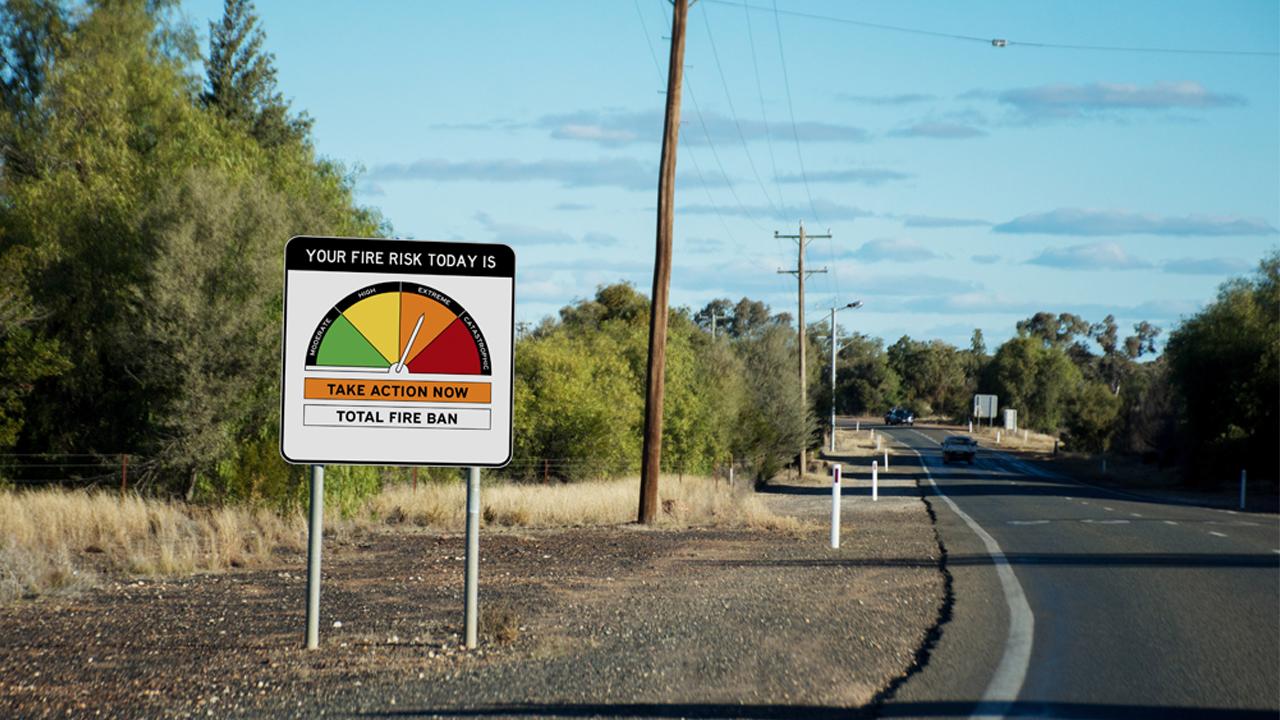Design
In the AFDRS, there are two main ways to look at fire danger:
- Fire Danger Ratings
- Fire Behaviour Index

Fire Danger Ratings
The purpose is to provide an efficient and easy to understand way to communicate fire danger broadly to the community.
Daily forecasted fire danger ratings will be shown on roadside signs (in jurisdictions where they are installed), emergency services websites, the Bureau of Meteorology webpage and are broadcast where required through media such as tv, radio, newspapers and the internet.
The Fire Danger Ratings feature:
- Broad categories representing levels of fire danger risk.
- Four fire danger rating levels.
- Simple fire danger rating names and intuitive colours.
- Distinct action orientated messages for each fire danger rating level.
Fire Behaviour Index
The Fire Behaviour Index (FBI) is a simple numerical scale that can be used consistently across Australia, allowing users to make decisions that require finer detail than the four Fire Danger Rating categories allow. The FBI runs from 0 to 100 and beyond, with increasingly high values indicating increasingly dangerous fire behaviour and therefore fire danger risk.
The FBI is designed to support fire management professionals and decision makers. The FBI, and how to apply it to your work, will be the focus of the rest of this module.
FBI forecasts are available on government agency intranet portals and through the registered users’ section of the Bureau of Meteorology website.
The Fire Behaviour Index features:
- A fine-grained scale of fire danger that runs from 0 to 100 and beyond.
- A stepped design to aid in operational decision making.
- Transition between steps based on changes in fire behaviour that have operational consequences.
- Management guidelines for each stepped category.
Components of the Operational Build
The Operational Build of the AFDRS is the underlying infrastructure that enables the latest science, technology and data to be used to produce accurate and timely fire danger information. There are four main components that work together to provide fire danger information.
Fuel State Editor (FSE): The FSE is an interactive tool that allows fire and land management agencies to capture field information and update maps relating to the fuel component of fire danger; this data is then exported to the Fire Danger Calculation Engine.
Fire Danger Calculation Engine: This is the component that combines the various fire behaviour models (eight models rather than the two used in the current system) with fuel, weather, and climate data sets to derive Fire Danger Ratings, a Fire Behaviour Index and other outputs on a seamless timescale. The calculation engine outputs data sets to various portals or feeds where users can see and/or interact with the information.
Fire Danger - Viewer (FDV): The FDV is an interactive and common visualisation tool for states and territories to view and interrogate fire hazard information; it includes the Fire Danger Ratings in map and table format, weather data, fuel data, etc.
BOM Products: The Bureau of Meteorology (BOM) produces products as part of the AFDRS suite of services that provide nation-wide standard information about fire danger for a variety of uses.
The AFDRS eLearning provides more information about the AFDRS and how each component works:
- Course 1: Introduction to the AFDRS (introductory level)
- Course 2: Applying the AFDRS (intermediate level)
Staff of fire management agencies are asked to conduct the AFDRS eLearning on their own department’s learning management system, if available. Check with your agency’s training team first.
Others can access AFDRS eLearning here: https://afdrs-training.afac.com.au/moodle